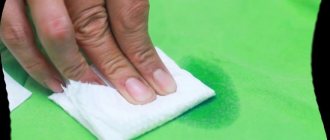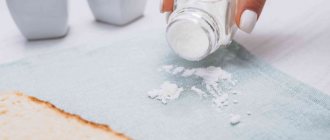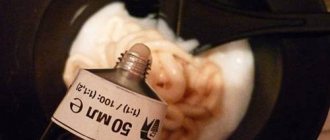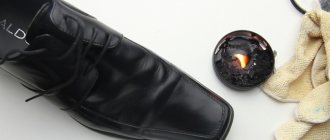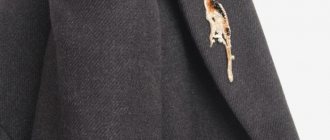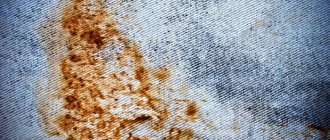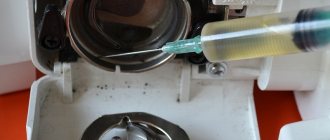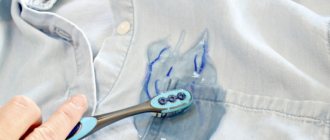The source of oil stains on furniture and clothing can be food, massage compounds, or car care products. To restore the damaged product to its original appearance, washing in a machine will not be enough.
The need for immediate treatment of the stain is due to the following reasons:
- Oil and the mixtures in which it is contained are characterized by fluidity. Because of this, already in the first minutes after contact with the fabric, the contamination covers a large area.
- The substance quickly oxidizes. It will be quite difficult to remove an oil stain once it has dried.
To achieve maximum efficiency, many housewives use organic solvents. These include ethanol, gasoline, acetone and kerosene. These substances are used to remove contaminants that originate from vegetable oil. When choosing suitable methods, you should take into account the type of material and available means.
Sources and nature of pollution
The most common sources of oil marks on clothing are cooking, cosmetic, and industrial oils (grease).
They leave bright, blurry spots that do not have a clear outline, which over time become covered with a layer of dust, fade and become dull. Old stains become visible on the reverse side of the fabric.
Main types of stains
Household oils
This includes sunflower, cottonseed, soybean, corn and the like. They are further divided into several subgroups:
It is easiest to deal with oil that dries slowly and does not form a film on the surface.
Technical
Automotive and industrial oils include: synthetic oil, mineral oil, diesel oil, transmission oil, cutting oil, etc.
At home, you can deal with any of the above contaminations if you apply enough diligence.
How to remove oil stains from clothes using folk remedies
As soon as you see a greasy stain on your clothing, start cleaning immediately. But do you know how to remove oil from clothes and how to wash oily clothes?
Before removing an oil stain, you need to blot the contaminated surface with a soft paper napkin or blotter, and then use one of the sorbent substances that will draw out most of the fat from the fabric.
Salt
- Sprinkle a thick layer of table salt over the entire contaminated area.
- Leave for an hour.
- Then shake off the soaked salt and replace it with new one.
- Repeat the procedure until the stain disappears.
Starch
Place a board (plywood) under the fabric.
- Potato starch is poured on top of the stain and on the plywood below.
- Leave for 3-4 hours, then shake off.
- If necessary, repeat the procedure.
Talc
This product is only suitable for very fresh oil stains, including essential oil stains.
- Talcum powder is poured onto the fatty mark, and a sheet of blotter is placed on top.
- Iron with an iron heated to medium temperature and leave for several hours, or for the whole day.
- Then shake it off.
Chalk
- Chalk powder is poured onto the fabric and pressed on top with a weight.
- Leave it like this overnight.
- Afterwards, shake off the chalk or clean it with a soft brush.
We recommend
After using sorbents, the area of contamination is treated with laundry soap or dishwashing liquid, left for some time (from ten minutes to two hours), then the clothes are washed as usual.
Mustard
Dry mustard powder has long been used as a means for washing greasy dishes. It also helps with stains on clothes.
- It is diluted with warm water until a paste forms.
- Apply directly to the stain and leave until the mixture is completely dry.
- Then they clean it with a brush and wash it.
Useful tips
To make the entire process of cleaning and further washing as easy as possible, it is recommended to use some tips:
- Dried and old fat deposits will require more time to remove than fresh ones. It is recommended to clean items immediately when dirt gets into them.
- Initially, it is better to wash by hand, and then use the machine method.
- Fat should be removed with smooth, careful movements so as not to rub it into the fabric. Otherwise, the result may be even worse, because the defect will become larger and absorb more strongly.
- If the fabric is thick, for example, denim, or a jacket is being cleaned, then you will need to wipe off marks on both sides of the material.
- If things are very expensive, then it is recommended not to conduct experiments, but to leave it in the reliable hands of specialists.
If it is impossible to wash items using the methods described, you will need to use dry cleaning services.
Old stains
To combat old oil stains, more aggressive substances are used, mainly solvents.
How to remove vegetable oil stains
There are different types of vegetable oils extracted from different plants.
The most common ones in everyday life are sunflower, olive, flaxseed, coconut, peach, and almond.
They not only have different taste qualities, but also physical properties - pour point, boiling point, viscosity.
If we consider them according to the parameter that interests us in this case, namely the degree of difficulty in removing stains from clothes, they are divided into several groups.
Division by solubility:
- easily soluble;
- difficult to dissolve.
Oils are:
- non-drying - almond, olive, castor, coconut, palm;
- semi-drying - sunflower, sesame, corn, rapeseed;
- drying - flax, nut, poppy, etc.
How and with what to remove a stain from vegetable oil depends on whether the oil belongs to one group or another.
- The first two groups are easily soluble. It's not very difficult to remove stains from them.
Useful
If the stain is fresh, before washing off the vegetable oil, apply a mixture of table salt and chalk powder to it. After two hours, the remaining mixture is removed with a stiff brush.
- It is most difficult to wash dry ones if you do not know their characteristics. When exposed to air (as well as when exposed to light and heat), they form a solid film (polymerize) that is insoluble in water and alcohol. But they easily dissolve in ether or essential oils.
Animal origin
Read about: how to remove brilliant green from clothes.
The most popular are butter, pork and beef fat, and fish oil. Almost all animal oils are easily soluble. The exception is fish oil and oils extracted from other seafood.
Solvents
Organic solvents do an excellent job with stains from non-drying and semi-drying oils (most of the vegetable oils that we are used to using and animals).
On a note
Before washing off Vaseline or other non-drying and semi-drying oil, you need to make sure that they do not disrupt the dye fastness and fiber structure. To do this, moisten a piece of white cloth with the product you want to use and rub it on an inconspicuous area of clothing. If it does not stain, you can treat the entire surface.
Also, when working with such substances, you need to remember safety precautions:
- do not bring liquids close to your face;
- use rubber gloves and a mask;
- provide fresh air access to the room.
Petrol
Use refined gasoline alone or in combination with water or white soap. This method is suitable for almost all fabrics, including wool. Cannot be used on jersey items.
- Gasoline is mixed with warm water (1:1) and applied to the contaminated area.
- Wash off and repeat the procedure if necessary.
We recommend
If the stain is very old, then dilute one part of white soap in ten parts of gasoline, leave this solution on the stained area for an hour or two. Then they wash it with gasoline and wash the item as usual with powder.
Ammonia and alcohol
- Ammonia (ammonia solution) is applied to the stain using a cotton swab and a piece of white cloth.
- Leave to act for half an hour and wash.
Read about: how to remove resin from clothes.
The same is done using pure alcohol or denatured alcohol. You can also combine half a glass of alcohol with a teaspoon of ammonia and half a teaspoon of gasoline. Apply the resulting solution to the stains and leave until the fabric is completely dry. After this, wash the item in warm soapy water.
Acetone
- Moisten a cotton pad with acetone and wipe the stained area with it from the edge to the center.
- Periodically replace the disk with a new one.
- Wash the item.
Useful
Do not use acetone on acetate fabrics or nylon.
To combat contamination from drying oils, you can use the following means:
- ether;
- turpentine.
Using these liquids, you can remove oil stains from any fabric, including delicate ones (silk, acetate, velvet, etc.). You can mix turpentine with ammonia or use it separately.
- The stain is treated with a cotton pad.
- After an hour or two it is washed off and the item is washed as usual.
Vinegar
Fish oil, oil from sprats and other canned food can be removed with vinegar and water.
- Dilute table vinegar with water (1:1) and rub the contaminated area with it.
- Rinse and wash.
How to wash technical oils
Technical or machine oils are a base and additives added to it (special substances that improve the properties of the base). They are usually dark in color and leave oily brown stains that are difficult to remove on clothing. Removing machine oil stains from silk, acetate and other fabrics is much more difficult than vegetable oil stains.
They can also be eliminated using solvents and household chemicals.
Kerosene
This is a more aggressive product, but it will work very well on machine oil stains.
- Apply the liquid to a cotton swab, generously lubricate the stain and leave for half an hour.
- Then rinse off and wash in soapy water.
How to get rid of massage oil at home
The likelihood of this mixture getting on items of clothing is quite high. The resulting contaminants are considered complex. To give T-shirts and trousers their original appearance, sprinkle the stain with salt.
Massage oil can be removed with salt
The smaller the grains, the higher the effectiveness of the chosen method. The crushed mixture is left on the damaged tissue for 10-15 minutes. At the next stage, use laundry soap or a universal stain remover called “Antipyatin”.
Household chemicals for oil stains
Many manufacturers of household chemicals produce stain removers that cope with stains from any type of oil.
Products can be in the form of paste, gel, spray, stick or soap.
- Any of them is applied to the stain for an hour or two (depending on the degree of contamination, type of fabric and manufacturer’s recommendations).
- Then the item is washed in a solution of powder or liquid detergent with water.
The main thing in the fight against oil stains is not to put off cleaning clothes until later, but to start working immediately. There are many methods for removing fat from tissue; you need to choose the most convenient and affordable one. The products can be used separately and combined with each other, and in the presence of heavy and old stains - applied sequentially. For all types of work, do not forget about safety precautions.
© 2022 textiletrend.ru
Baking soda
Baking soda is a versatile product that has been used since ancient times for cleaning. Because it has bleaching properties and is an astringent, it is a very good choice for removing tough stains such as those left by oil.
How to use it
- Apply a little baking soda to the stained cloth and spread evenly with a brush.
- Leave on for 40 minutes and then rinse off.
